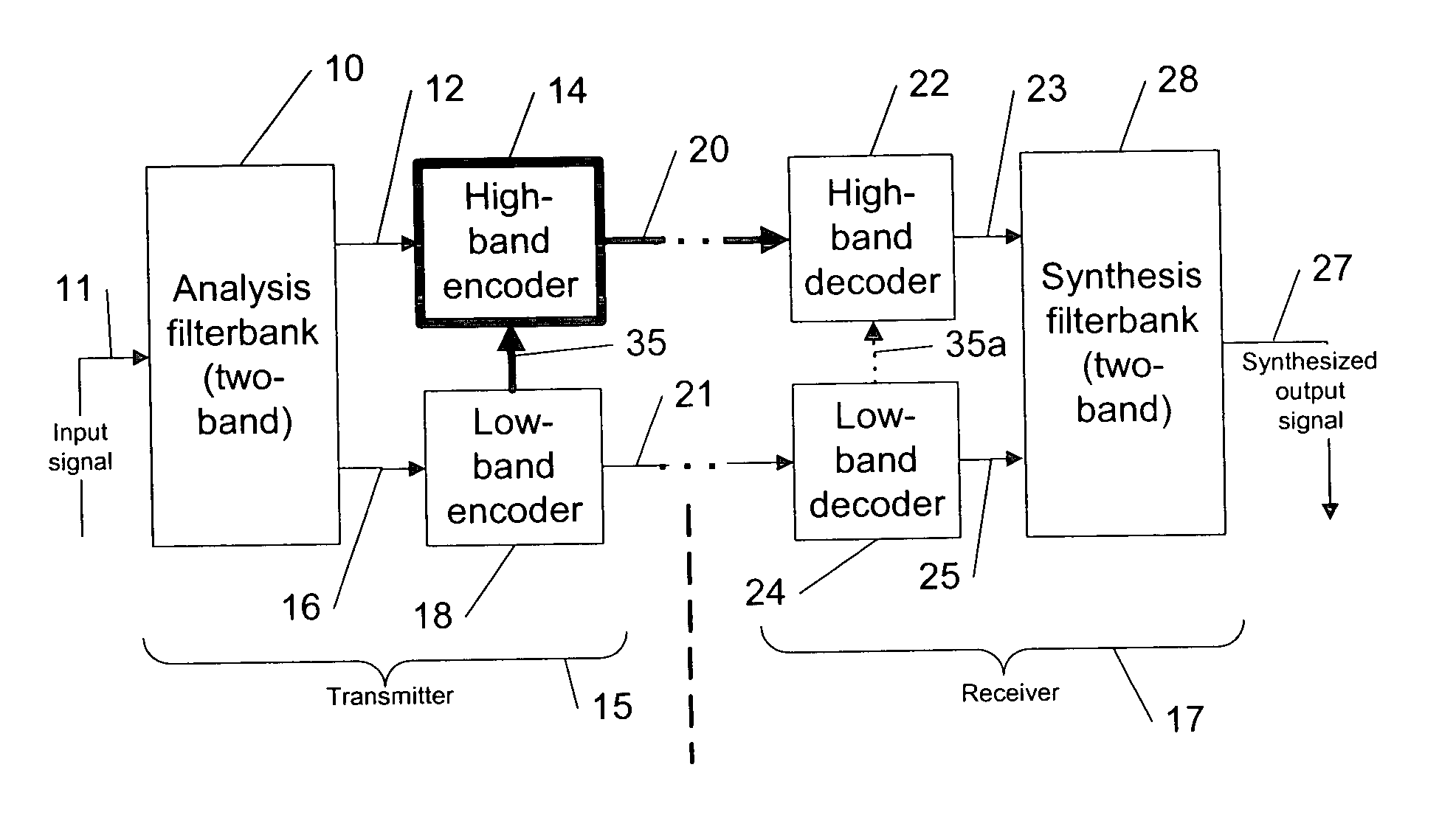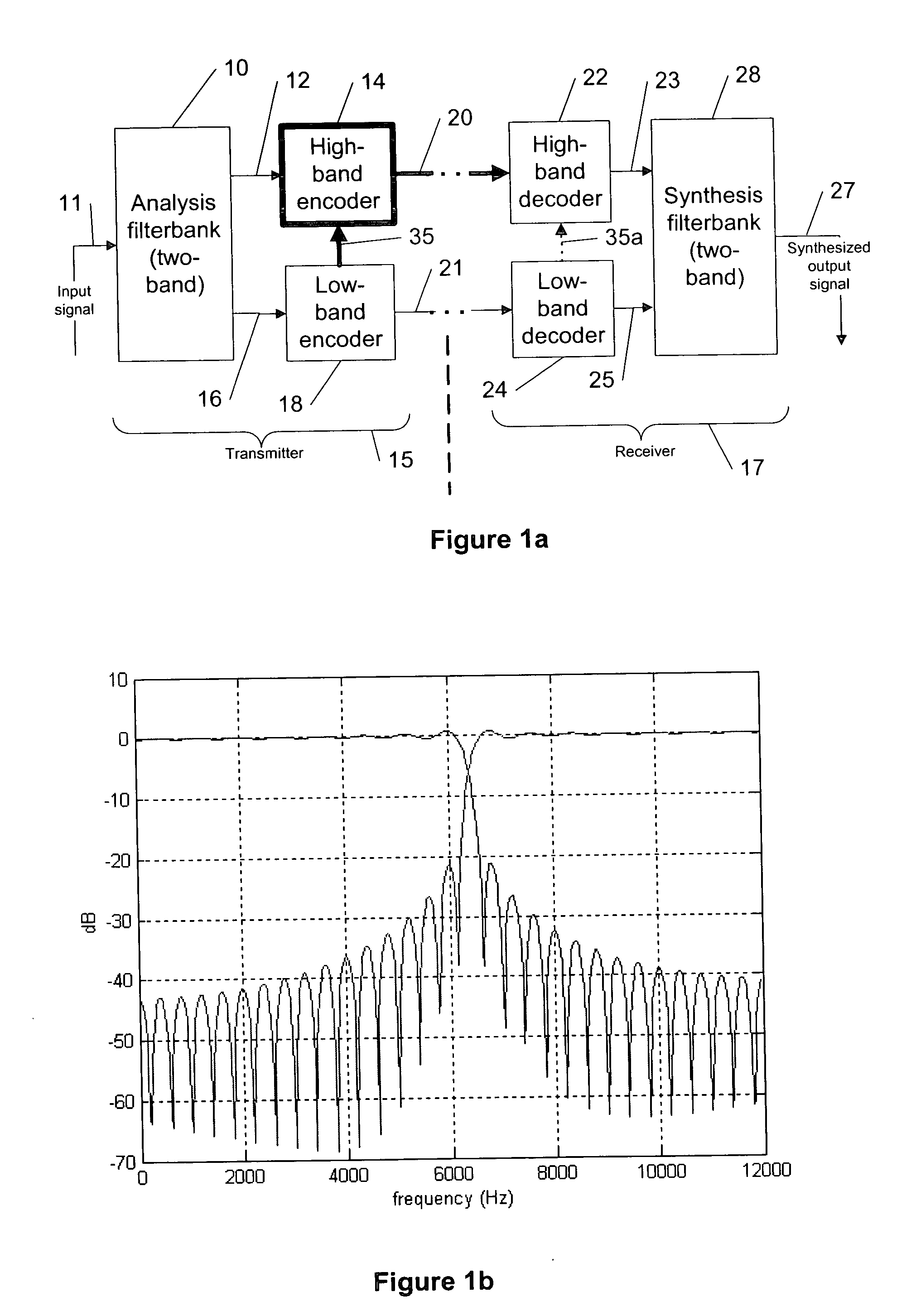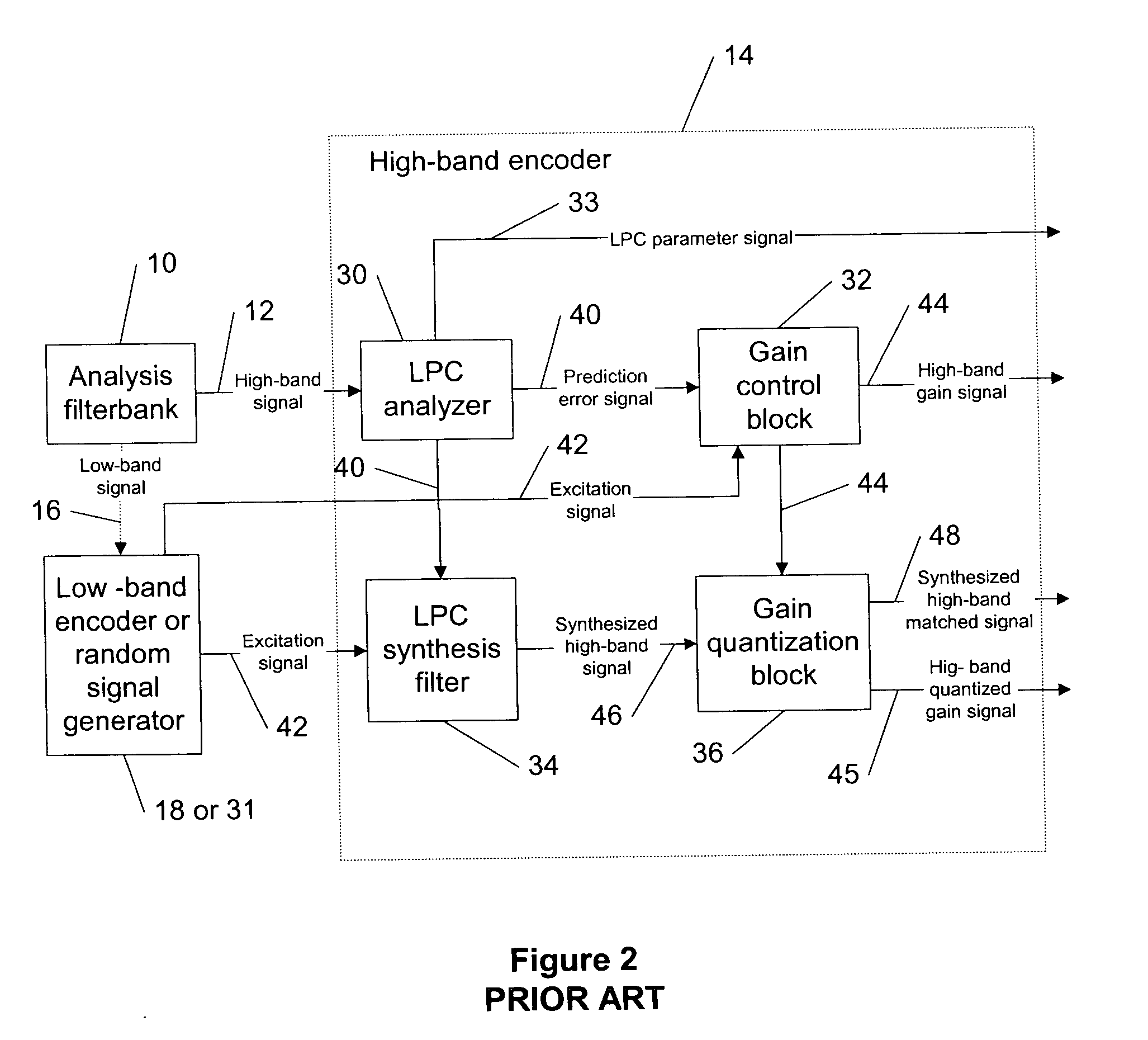Signal adaptation for higher band coding in a codec utilizing band split coding
a technology of higher band coding and codec, applied in the field of audio coding, can solve the problems of high perceived signal level in the high band, inability to fully reconstruct the original signal of the high band signal, and the difference in the perceived loudness of the signal
- Summary
- Abstract
- Description
- Claims
- Application Information
AI Technical Summary
Benefits of technology
Problems solved by technology
Method used
Image
Examples
Embodiment Construction
The present invention provides a novel methodology for adjusting a bandwidth extension algorithm by adapting one or more of enhancing perception parameters (e.g., a signal level, a signal energy and / or a gain) of a high-band encoded signal for a high-band coding based on the characteristics of the input signal and an encoding performance in a low band with a codec utilizing audio-band-split coding with separate encoders and decoders for each audio band.
In a typical system to which the present invention can be referred, an extended AMR-WB (AMR-WB+) codec (adaptive multi rate wide band speech / audio codec) is applied to a band-split structure in which the audio bandwidth is divided, e.g., in two parts before the encoding process. Both bands are encoded independently. However, to minimize a bit rate, the higher (or high) band is encoded using bandwidth extension techniques. That is, a part of the high-band encoding is dependent on the low-band encoding. For example, the high-band exc...
PUM
 Login to View More
Login to View More Abstract
Description
Claims
Application Information
 Login to View More
Login to View More - R&D
- Intellectual Property
- Life Sciences
- Materials
- Tech Scout
- Unparalleled Data Quality
- Higher Quality Content
- 60% Fewer Hallucinations
Browse by: Latest US Patents, China's latest patents, Technical Efficacy Thesaurus, Application Domain, Technology Topic, Popular Technical Reports.
© 2025 PatSnap. All rights reserved.Legal|Privacy policy|Modern Slavery Act Transparency Statement|Sitemap|About US| Contact US: help@patsnap.com



